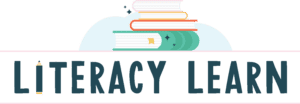All About the Vowel Team/Diphthong Syllable Type
This post may contain affiliate links. As an Amazon affiliate, we earn from qualifying purchases.
Learn all about the vowel team/diphthong syllable type! This syllable type includes either a vowel team or a diphthong functioning as the vowel within the syllable. Get tons of information to help equip your students to easily read longer words!

About Vowel Team/Diphthong Syllable
👉 What is a syllable? Let’s begin with the basics and talk about syllables. A syllable is simply a word part with one vowel sound. Words can be one syllable or include more than one syllable. But no matter how long the word is, every syllable MUST include a vowel.
👉 How many types of syllables are there? There are actually six different types of syllables. The vowel team/diphthong syllable is just one of those syllable types.
Go in-depth and learn more about the six different types of syllables, and grab a FREE anchor chart.
👉 What is the vowel team/diphthong syllable? In a vowel team/diphthong syllable, the vowel team or diphthong functions as the vowel within that syllable.
In the visual below, you’ll notice one syllable words and multisyllabic words that include a vowel team or diphthong.

- In the word ‘main,’ the vowel team AI serves as the vowel within the syllable.
- In the word ‘how,’ the diphthong OI serves as the vowel within the syllable.
- The the word ‘outside‘ (2 syllables), we have a diphthong syllable AND a VCe (Magic E) syllable. The diphthong OU serves as the vowel in the first syllable – out. The VCe serves as the vowel in the second syllable – side.
- In the word soapbox (2 syllables), we have a vowel team syllable and a closed syllable. The Vowel Team OA serves as the vowel in the first syllable – soap. The short O serves as the vowel in the second closed syllable – box.
In order to decode and encode longer, multisyllabic words, students should have a strong foundation in phonics and understand the basics regarding syllable types!

All About Vowel Teams
👉 What is a vowel team? A vowel team is when we have multiple vowels (or other letters functioning as vowels) working together to make a long vowel sound.
That’s why they’re called a team! Together, the letters create one sound.
👉 Common vowel teams:
- Long A – ai, ay ei, ea, eigh, ey.
- Long E – ee, ea, ei, ie, ey.
- Long I – igh, ie.
- Long O – oa, ow, oe.
- Long U – ew, eu, ue.
Grab our long vowel worksheets that include many vowel teams – including long e and long o.
All About Diphthongs
The word diphthong is a fun one. I find that my students love saying this word when they realize it’s one of the few words where two digraphs (ph and th) are next to each other.
👉 Teach the word’s origin to help students understand the meaning of the word diphthong:
The word Diphthong is Greek in origin.
di (means “two/double”) + phthong (from the Greek root phthongos means “sound/voice”)
Literal definition: Two sounds.
👉 What is a diphthong? Diphthongs combine two vowel sounds but are said together as one sound within a syllable. They are also referred to as gliding vowels.
This is because when saying the new sound, you’ll notice that your mouth starts in one position and ends in another position.
Many sound walls that include mouth articulation photos show TWO pictures for these diphthongs. That is because of how the mouth has to move, or glide, to make the sound.
👉 Common Diphthongs:
- oi
- oy
- ou
- ow
- au
- aw
Teaching Tips
- For practical resources to use with students, visit our shop to get 9 Diphthong Practice Worksheets to help you explicitly teach kids these diphthongs.
- Some programs consider vowel teams and diphthongs separate syllable types. But Noah Webster considered Vowel Team/Diphthongs to be one syllable type because of their similar features.
- Get 2 FREE vowel teams/diphthongs decodable passages!
- Make sure you teach students that vowel teams and diphthongs function the same within a syllable, and that’s why they’re together as one syllable type.
👉 Get more resources to help teach syllable types and syllable division, with our Syllable Division Worksheets and Syllable Division Rules and Posters!
Questions? Comments? We’d love to hear from you!
Please leave a comment below or tag us on Instagram @literacylearn!


Thank You Katie and Laura for providing “us” educators with such in depth resources to help our students become stronger readers. Your resources are helping me to plan out specific spelling lessons that I would like to introduce to my students during the school year 2023-2024. Also, I am very thankful that you allow your readers to keep in touch with you!! I am thankful for this because I always seek guidance from educators who are more knowledgeable and experienced in areas that I have not practiced in as much. Literacy Learn’s constant resources or freebies are gifts that are very much appreciated!!
Thank You so much for the “vowel team” posters and lessons….these will help me guide my second and third graders this coming year.
Hi Mary, Thank you so much for sharing your experience and feedback with us. We are THRILLED to hear our resources are beneficial for teachers and students! 🙂 -Katie & Laura